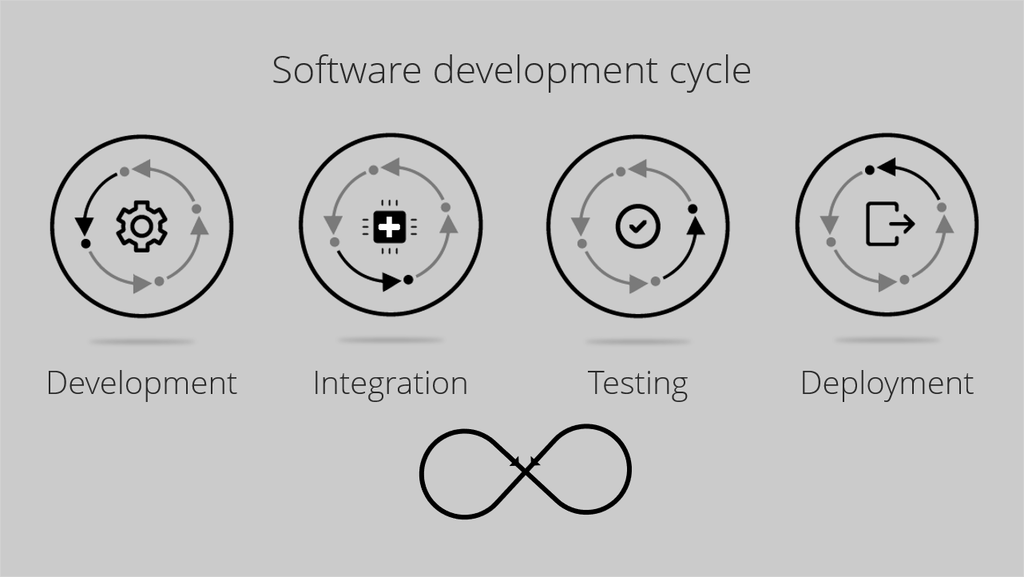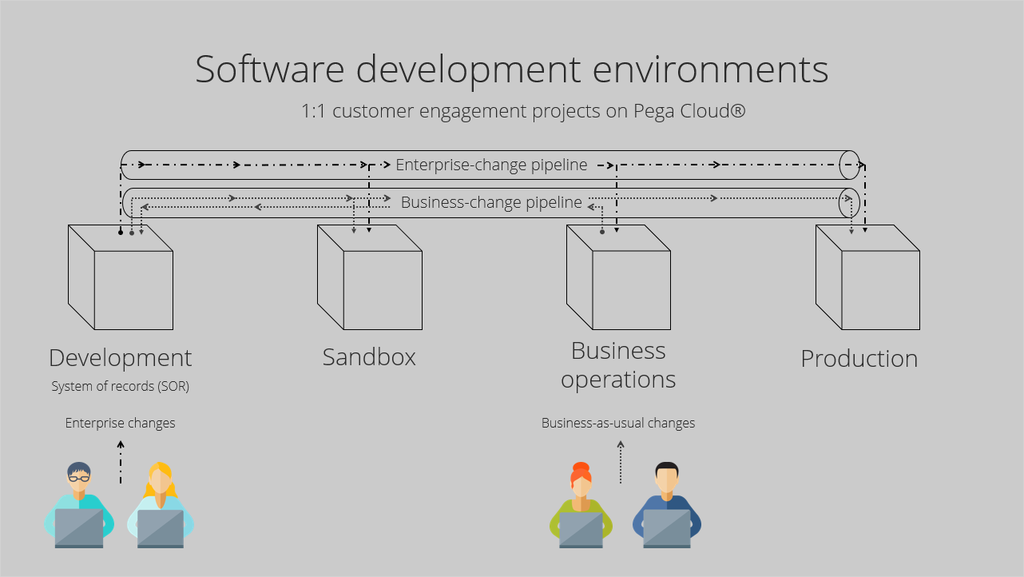
Change management process
Introduction
When business requirements change rapidly, the software development process needs to be more agile, while still producing high quality, reliable software. This topic covers the importance of the change management process, and how it works in a one-to-one customer engagement project for Pega Cloud® customers.
Video
Transcript
This video describes the change management process in a one-to-one customer engagement project, and the cloud environments provided by Pega to support that process.
Let’s start by understanding some background on change management in enterprise software development projects.
In recent decades, organizations have been using computer software to automate many traditionally manual tasks.
Business processes need to constantly evolve as customer behavior and market conditions change. Naturally, the software that supports business practices needs to evolve as well. As the pace of change of business requirements increases, the software development process needs to be more agile, while still producing high-quality and reliable software.
Here’s a simplified view of an enterprise software development cycle. It consists of four high-level stages.
Developers develop new software or update existing software.
The work from several developers is merged into a single system in the integration phase.
The new software version goes through testing, and the final, approved software (or a software change) is deployed into production, which is the system that supports mission-critical business processes.
This cycle repeats for new as well as incremental updates to existing software.
A software development process is supported by different environments.
Let’s study the environments available to Pega Cloud® customers in support of a one-to-one customer engagement project using Pega Customer Decision Hub™.
A development environment is one in which developers create new versions of the application by adding enhancements or fixing issues. This system also doubles as a system of record for Pega applications.
A sandbox environment is used for various testing such as functional testing, unit testing and user acceptance testing.
The business operations environment is a replica of the production environment. However, it contains only a sample of the production data. This is where the business operations team creates and tests new business artifacts and conducts simulations.
The production environment is the main system that propagates next best actions to external channels, collects customer responses, and where the AI learning happens. It is also used for live monitoring of key performance indicators.
In a one-to-one customer engagement project, changes to the application can be classified into two categories: enterprise changes and business-as-usual changes.
Enterprise changes are the changes that developers make to the Pega application. An example of enterprise changes are extensions to the core Pega application and its integration points with external systems.
Developers make these changes in the development environment. Changes to the application are pushed to other environments through the enterprise-change pipeline managed by the Pega Deployment Manager™.
Business-as-usual changes are made by the business operations team in the business operations environment. Examples of business-as-usual tasks are: creating a new action or updating an existing action with new treatments or engagement policies. Also, this environment is used to carry out various simulations and analyses, for example, to test if there is an ethical bias in the decisions made by the next-best-action strategy framework.
Changes from the business operations environment are pushed to the development environment and from there to other environments through the business-change pipeline.
You have reached the end of this video which showed you:
- The importance of the change management process in an enterprise software development project.
- The high-level software development cycle.
- The cloud environments provided by Pega for a one-to-one customer engagement project using Pega Customer Decision Hub.
- The flow of enterprise and business changes through the enterprise- and business-change pipelines.
This Topic is available in the following Modules:
If you are having problems with your training, please review the Pega Academy Support FAQs.
Want to help us improve this content?



